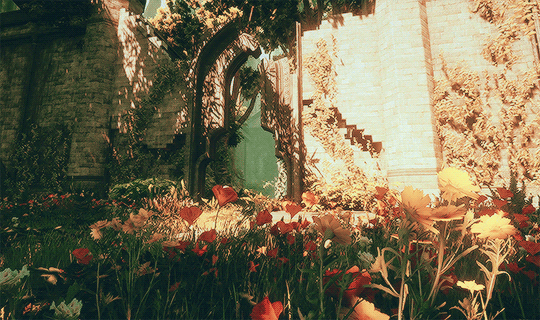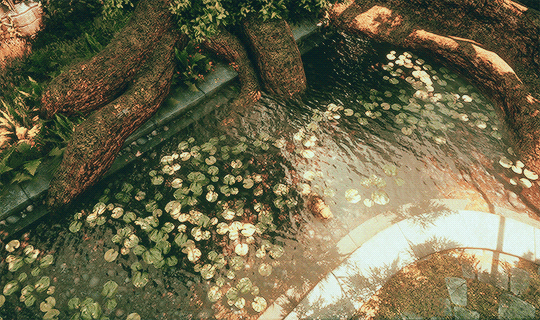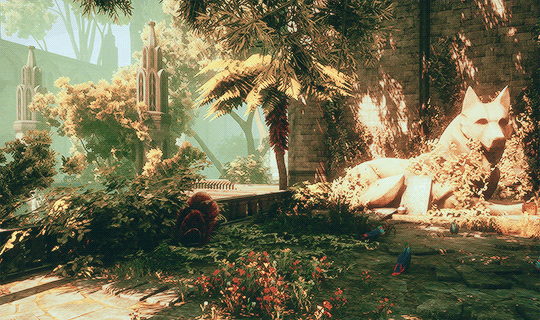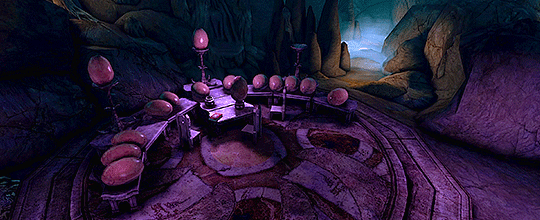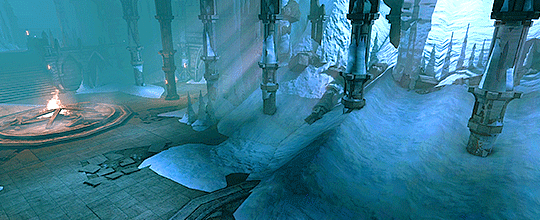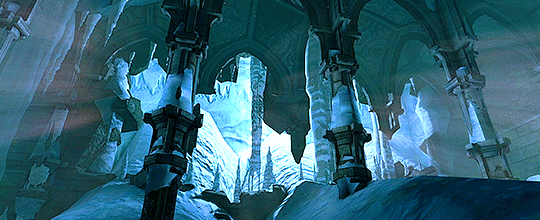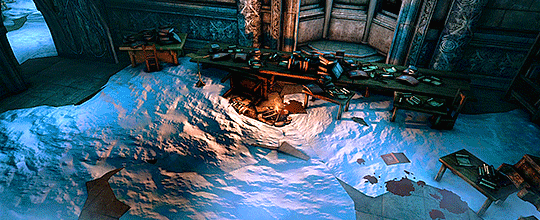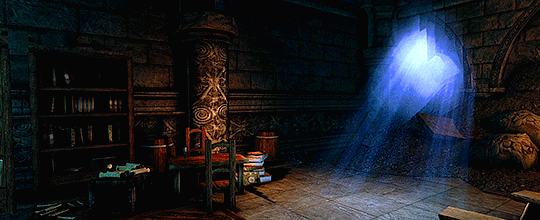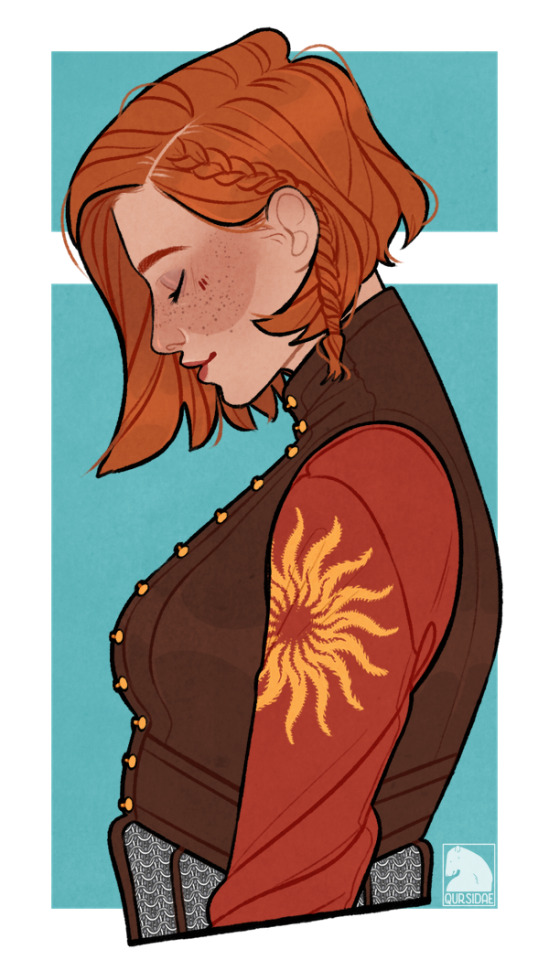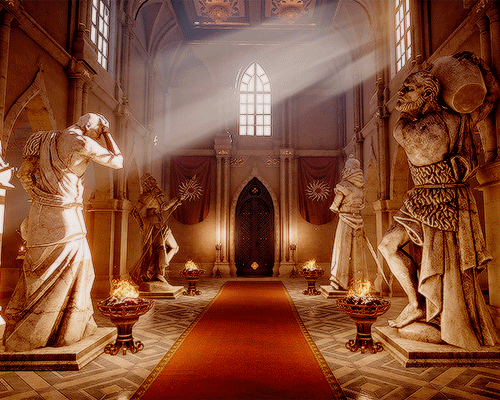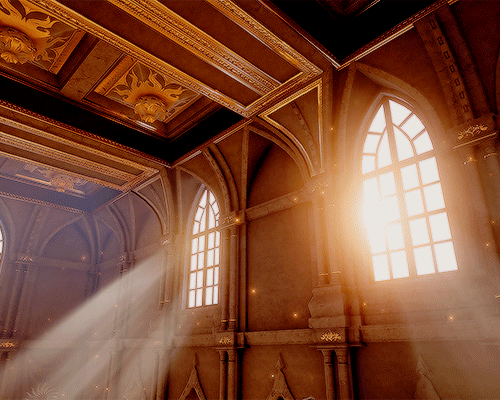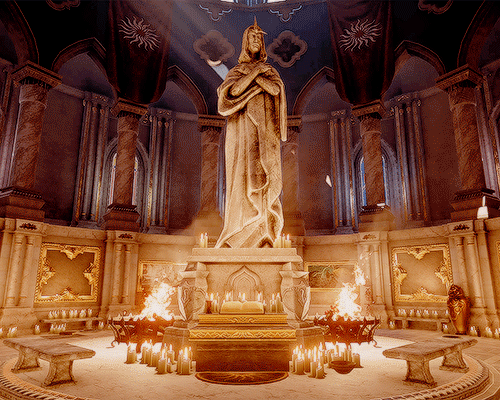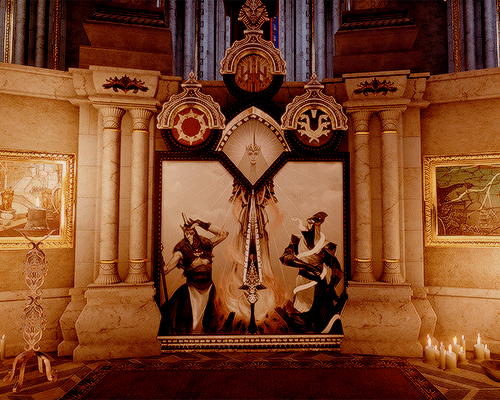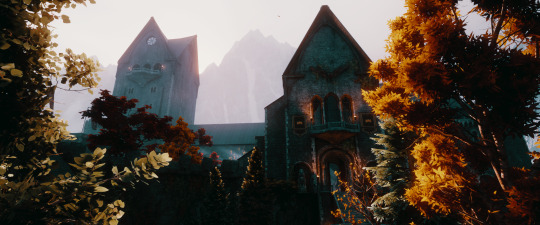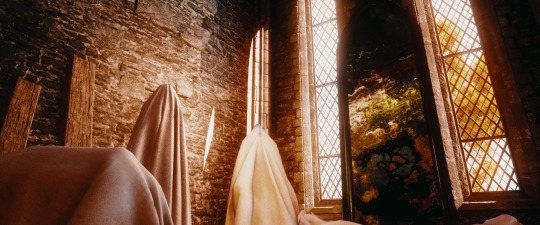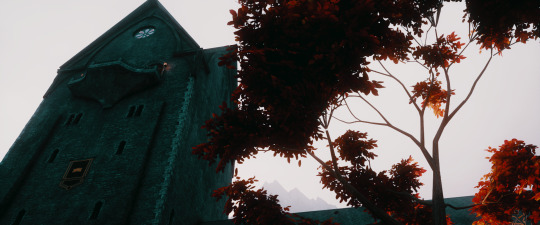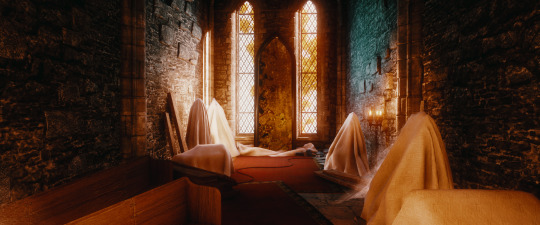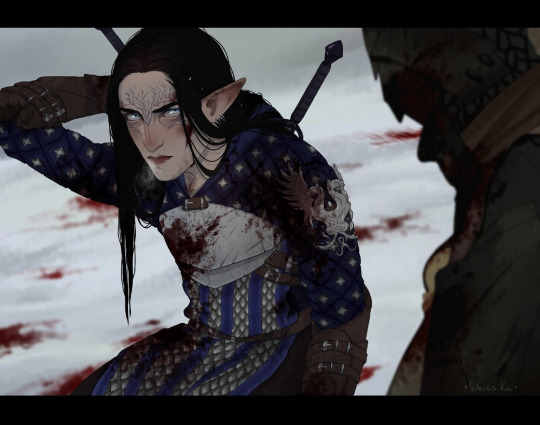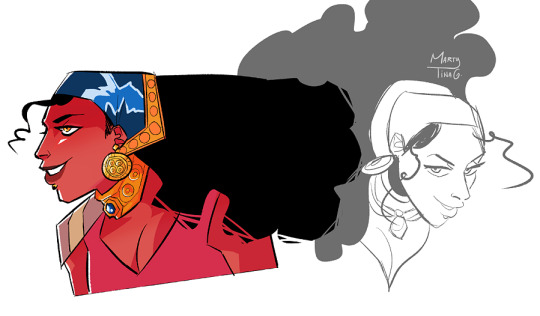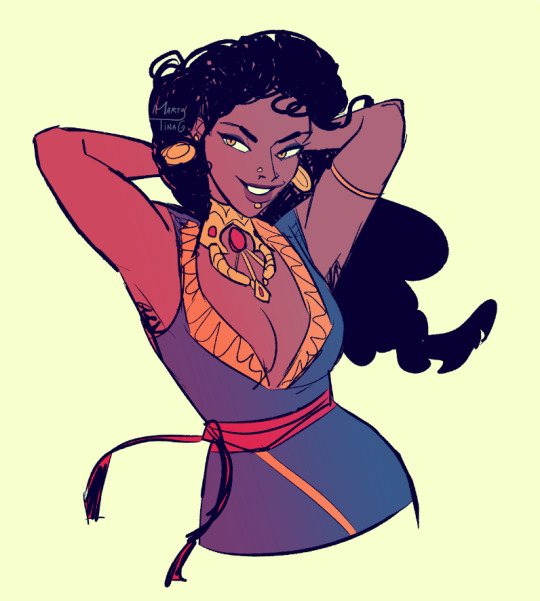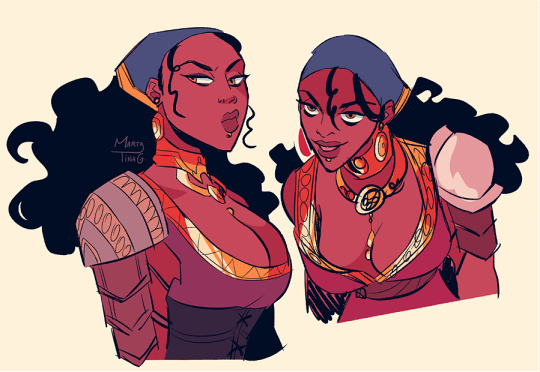Blog about Dragon Age lore. The lore in the Dragon Age series is deep and rich. Players will not only discover the lore surrounding the land of Thedas, but will discover the history and theory of religions and magic too.
Don't wanna be here? Send us removal request.
Photo
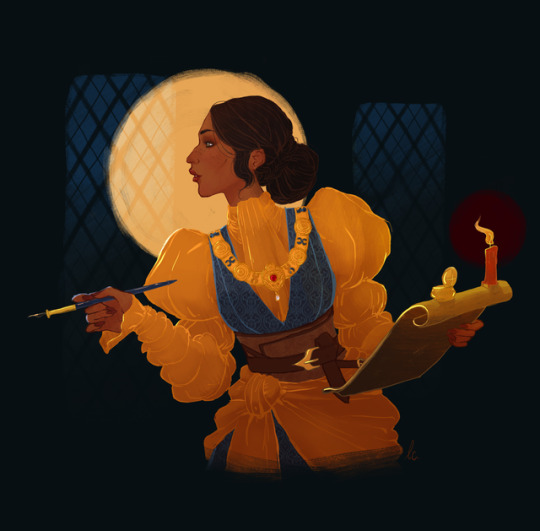
Joséphine, the Skyhold sunshine ! From Dragon Age Inquisition
5K notes
·
View notes
Text

Dragon Age: Origins - The Warden
In Peace, Vigilance. In War, Victory. In Death, Sacrifice.
This is what it means to be a Grey Warden.
221 notes
·
View notes
Photo
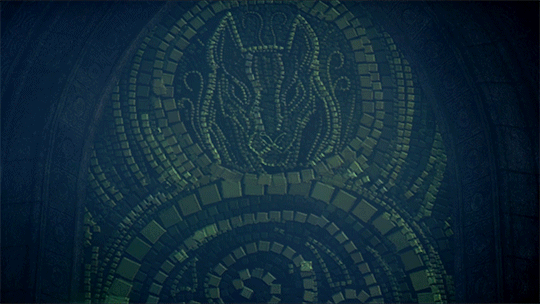
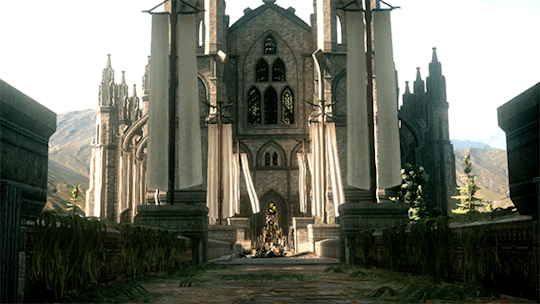
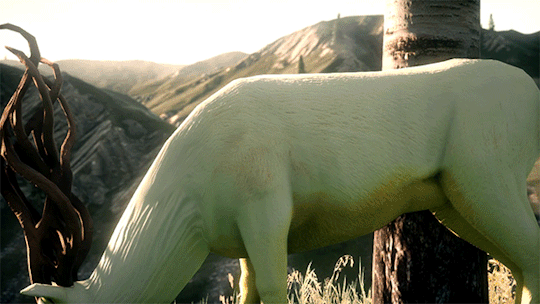
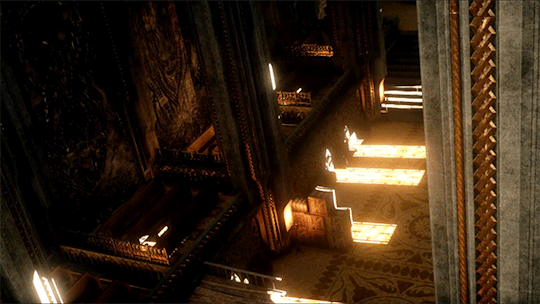
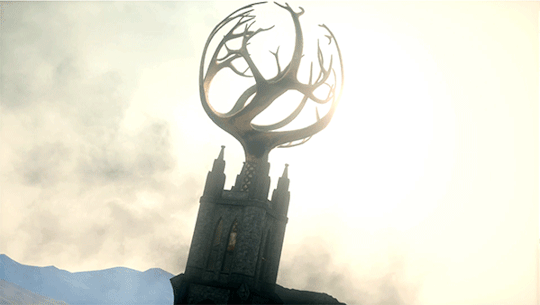
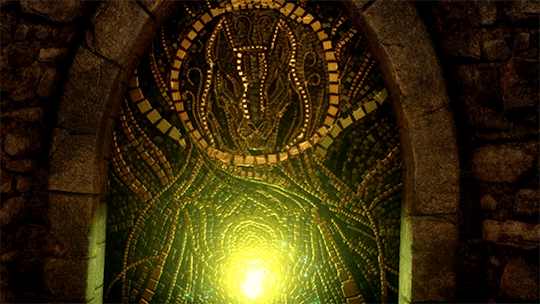
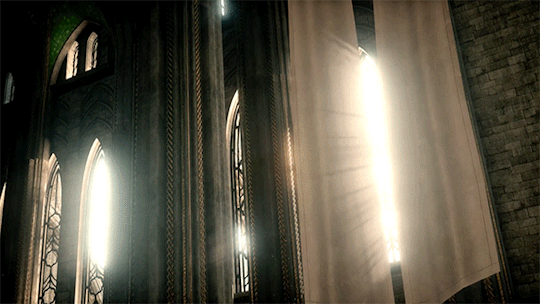
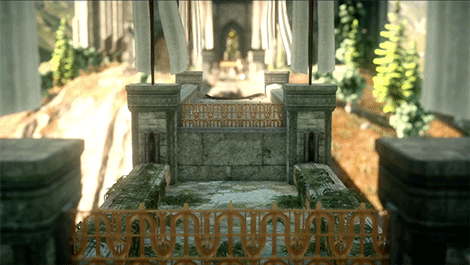
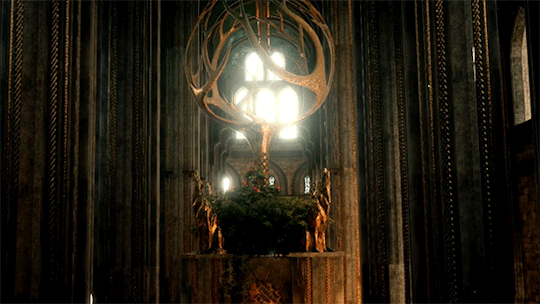
“Cowering, cringing, blinking in the light. Then cool hands, kind voices. Sleep now. You’re safe.”
“They came here hurt, hungry. This was help. A new home.”
3K notes
·
View notes
Text

Seeker Cassandra Allegra Portia Calogera Filomena Pentaghast ♡
803 notes
·
View notes
Text
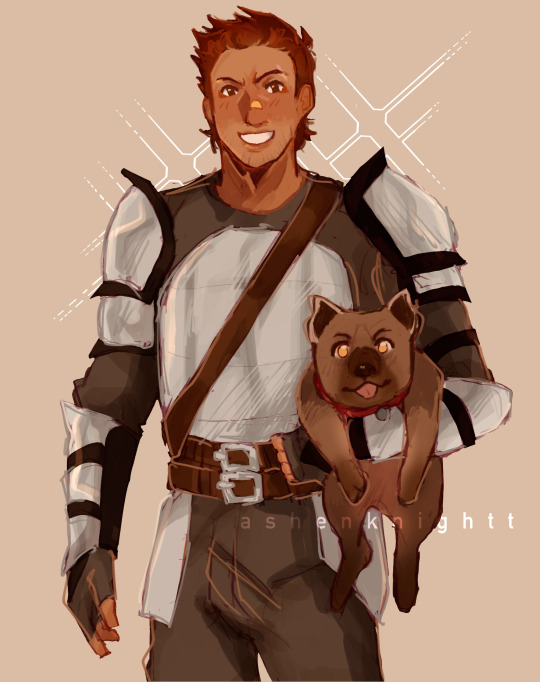
i just rlly wanted ti draw alistair w a mabari
2K notes
·
View notes
Text
Education
Education in Thedas varies depending on race, culture, and class, and from nation to nation.
Human nations
Andrastian Chantry
The education provided to those of the Chantry appears on par with that of nobles. Templar recruits are literate and are taught history[1] in addition to their martial training and religious education. Only initiates, those who have taken vows to devote their lives to the Chantry, receive an academic education.[2]
Members of the Chantry, by virtue of their responsibilities, are naturally literate and well-read, in the Chant of Light if nothing else.
Local Chantries may also provide some instruction to their followers and allow access to their texts.[3]
Chantry members may also pursue scholarship. Clerics are the true academics of the Chantry, those men and women who have dedicated themselves to the pursuit of knowledge.[2] The most well-known Chantry scholar is Brother Ferdinand Genitivi, lecturer and author of numerous texts and travelogues. Other scholars search for ancient artifacts and scrolls, such as Sister Justine, curator of the Denerim chantry. Justine is also versed in decoding ciphers and encrypted text.
Circle of Magi
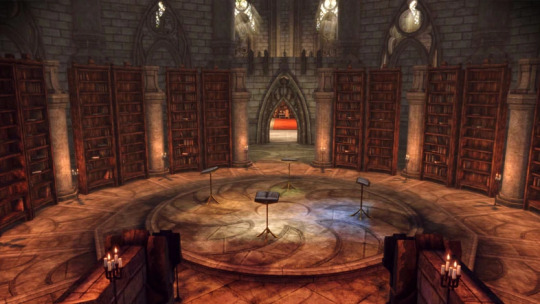
The library of Kinloch Hold.
The education of a mage is as extensive as that of a noble, if not more so. Beyond being taught to control their magic, a mage learns of the various schools of magic as well as languages, reading, writing, scrying, healing, etc. A mage's training consists of extensive study of arcane lore.
Much like the Chantry, the Circle of Magi encourages scholarship and publishes the completed research. Examples of this are the botanical writings of Ines and the spirit research of Rhys. Through their education and scholarship, mages are considered some of the most educated members of society and as such may sometimes function as advisers in royal courts.
Circles of Magi have massive libraries and are typically the greatest repositories of knowledge in a given country, though access is naturally limited.
Commoners
Commoners appear to receive little formal education in most countries in Thedas and many may be illiterate. City elves receive even less education than human commoners. As such, dwarven runes may be used in place of writing in some cases.[4] In other instances tally marks may be used to delineate locations or distances.[5]
However, in sharp contrast, those who work as servants in noble estates appear to receive extensive education, at least enough that is sufficient to perform their tasks.[6]
In recent years, Empress Celene Valmont I has been strongly encouraging the University of Orlais to overlook the lack of status and rank for individuals who show prodigious talent or potential which could help further the interests and prestige of the Orlesian Empire, provided a noble sponsors them. Most recently this has even extended to Celene personally interceding in support of an elven math prodigy, Lennan, who was sponsored by Comtesse Helene.[7] Elves are now allowed into the university, although it is common for their work to go unacknowledged and uncredited.[8]
Slaves
Slaves in the Tevinter Imperium are often illiterate[9]; However, some receive formal education and training for specific purposes such as working in libraries, accounting or scribing. Literacy is notable and reflects on a slave's price.[10][11]
To make up for this lack of instruction, Tevinter slaves develop their own pictograms as a way to warn other slaves of things such as a master's temperament and other practical uses related to their society. These symbols go largely unnoticed by their owners and have a local significance, thus the same image might mean different things to different groups.[12]
Fereldan nobility
Among the Fereldan nobility, an education is typically provided by a learned tutor, such as Aldous in the Human Noble Origin. Noble Andrastian families may often have a Chantry Mother as a member of the household to attend to the religious education of the young. Examples of Mothers attached to noble households are Mother Mallol and Mother Ailis of the Cousland and Theirin families respectively.
A major facet of noble education appears to be history, as Aldous drills both the Human Noble and young squires in the household on family history. Reading and writing are naturally part of this education. A noble education does not necessarily make one a strong scholar however, as even King Maric is by his own admission a poor reader.[13] Martial training is also a component of the education of nobility, as nobles are expected by their commoners to defend them and their territories. It is unusual, but not unheard of, for noble daughters to be educated in the ways of war and battle.
Noble education may also include such things as dance and song, as Leliana learned in Lady Cecilie's household.
Noble households may also boast libraries, as Castle Cousland does.
Dwarves
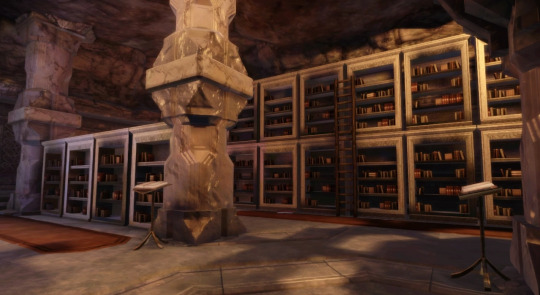
The archives of the Shaperate
Dwarven education in Orzammar appears to be given to those with caste. Little is known of the nuances of dwarven education but it appears that at least part of it, amongst nobles, may be administered by members of the Shaperate.[14] Martial training appears to be a major element of dwarven education in Orzammar, with the best trainers being retained by noble households.
The Shaperate is arguably the largest repository of history and knowledge. Its resources are available to anyone, in order to pursue both personal[15] and professional research. Noble households may also serve as patrons for Shaperate scholars.[16]
However the Shaperate is not the only source of scholarly work in Orzammar. A mining caste dwarf named Grundrak wrote a book named 'On Combustibles and Corrosives' which discusses the use of combustiles and corrosives for best effect and contains the formalae for both the Fire Bomb and Acid Flask. This book was written in the Trade tongue as he was certain that humans needed the advice most of all.[17]
Casteless dwarves
Amongst the casteless there is no formal education; indeed, most casteless dwarves appear to be functionally illiterate.[18] However, noble hunters are literate and highly educated in poetry and other skills in order to make them attractive to noble partners.
Qunari
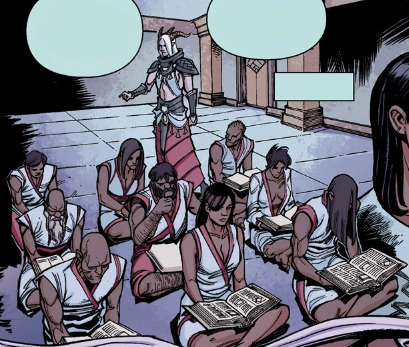
A Tamassran educating converts
Education amongst the Qunari is administered according to one's role in the rigid society of the Qun. Learning is a core philosophy of the Qunari way of life. In spite of it, many Qunari do not speak the common tongue of Thedas.[19] Amongst Qunari, the tamassrans are arguably the most educated, being fluent in many languages[20] in order to educate, or re-educate, converts to the Qun. Tamassrans raise the young, administer their general education, and evaluate them for placement in society.
Dalish elves
Education among the Dalish appears to be in the main oral,[21] who instruct through the use of lore and storytelling. The Dalish retain their history through oral tradition as well as books in some cases.[22] A clan's First studies lore, magic and history in order to become a successful Keeper.[23] A Keeper is ostensibly a clan's leader and as such is viewed as wise and learned.
Dalish elves hold Arlathvhens in order to reconvene with other clans and to exchange their collected lore.
Known scholars
Chantry-sanctioned
Brother Ferdinand Genitivi[24]
Ines Arancia[24]
Sister Petrine[24]
Sister Lilian Hatch[24]
Sister Oran Petrarchius[25]
Sister Dorcas Guerrin[26]
First Enchanter Josephus[27]
Disapproved by the Chantry
Laudine[28](former Chantry Sister)
Others
Philliam, A Bard![29]
Massache de Jean-Mien[26]
Lady Alcyone[30]
Baron Havard-Pierre D'Amortisan[30]
Ferdinand Pentaghast[31]
Mother Ailis[32]
Frederic of Serault[32]
Stephan d'Eroin
Notable repositories
The Shaperate of Orzammar
The library of Kinloch Hold
Archive of the Crows in Antiva City
The Grand Library of The Winter Palace, Orlais
Vir Dirthara, the Shattered Library, accessible from The Crossroads
The library of Weisshaupt Fortress in the Anderfels[33]
Known universities
University of Orlais[34]
University of Markham[35]
University of Ferelden (If Anora is the sole ruler)[36]
Trivia
Zevran Arainai and other assassins of the Antivan Crows are notably literate,[37] and the Crows maintain their own scholarship in their archive.
Fenris is illiterate as a consequence of his enslavement.[38]
Elan Ve'mal mentions there being a specific college for herbalists.
#dragon age#dragon age inquisition#dragon age origins#dragon age 2#dragon age lore#da#dai#dao#da2#DA Lore#da 2
9 notes
·
View notes
Text
Human
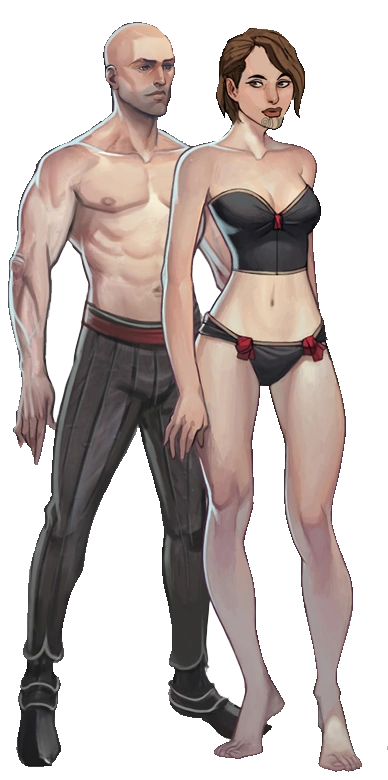
Humans are the most numerous, yet also the most contentious of all the races of Thedas. Only four times have they ever united beneath a single banner, the last being centuries ago. The monotheistic faith of the Chant of Light plays a major role in human society. The majority of humanity in Thedas descended from numerous human tribes.
History
Both the elves and the dwarves claim that there was once a time when humans did not walk the land.[1] There is no mention of a time when the Veil didn't exist in human history.[2] The Chantry teaches that the Maker created the Veil before He created men.[3]
Some scholars believe that the first humans in Thedas came from the rainforests of Par Vollen many thousands of years ago, migrating south from the archipelago. The pyramids they built still stand to this day and are regarded by travelers to the region as true wonders.[4] Elven lore also states that humans first arrived in Thedas around -3100 Ancient[5] from Par Vollen to the north.[6]
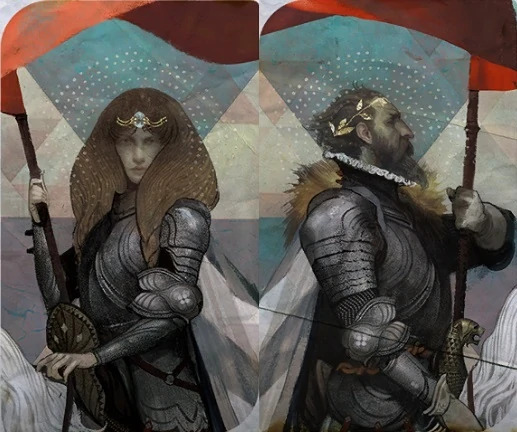
Tarot cards depicting a Human female and male in Dragon Age: Inquisition
The first human tribe, the Neromenians, divided into various tribes to become the progenitors of many nations in Thedas.[7] This tribe settled the entire coast along the Nocen Sea and subdivided into separate kingdoms: Qarinus, Tevinter, Neromenian, and Barindur, which ultimately united to form the Tevinter Imperium.
Humans in the lands of Tevinter used to worship a draconic pantheon of Old Gods, which are now said to slumber beneath the earth. The magister rulers of the ancient Tevinter Imperium who regularly talked to the Old Gods, engaged in a series of invasions in which they defeated the elven kingdom of Elvhenan and enslaved the race. Boosted by the sheer number of slaves, the Imperium conquered almost the entirety of Thedas in the next few centuries.
Eventually, the Imperium was challenged from the south by a barbarian uprising, the armies led by Maferath and his wife, the prophet Andraste.
Andraste brought the teachings of a new god, the Maker, and her word spread quickly. The oppressed masses of the Imperium rose up in rebellion to support the invading barbarians and eventually most of the south fell to their might. Andraste was not stopped in her Exalted March until she was betrayed by her husband: jealous of her power, Maferath turned Andraste over to the Tevinter archon and she was burned at the stake. The Chant of Light would say that the Maker turned his back on humanity when she died. He would only return and make the world into a paradise when the Chant of Light was sung from all corners of the world, and so the Chantry began to spread. The clerics of the Chantry were oppressed until the legendary emperor Drakon of Orlais converted and took up their cause, spreading the Chantry throughout all the lands that he conquered in its name. In modern times, the Chantry has spread throughout the known world, its power unquestioned even as it begins to give way to internal strife.
Despite internal strife, humans remain dominant across Thedas, with the exception of the underground kingdom of the dwarves and the Qunari islands to the north.
Culture
Humans are probably the most culturally diverse race in Thedas as they have half a dozen nations of their own, each with different customs and traditions.
Chantry
The education provided to those of the Chantry appears on par with that of nobles. Templar recruits are literate and are taught history.[8] The Chantry also produces a great deal of scholarship and research, the most notable scholar being Brother Ferdinand Genitivi.
Circle of Magi
The education of a mage is as extensive as that of a noble, if not more so. Beyond being taught to control their magic, a mage learns of the various schools of magic as well as languages, reading, writing, scrying, etc. Much like the Chantry, the Circle of Magi encourages scholarship and publishes the completed research.
Commoners
Commoners appear to receive little formal education in most countries in Thedas and many may be illiterate. City elves receive even less education than human commoners.
Ferelden nobility
Among the Fereldan nobility an education is typically provided by a learned tutor, such as Aldous in the Human Noble Origin. Noble Andrastian families may often have a Chantry Mother as a member of the household to attend to the religious education of the young.
Religion
Currently, the majority of humans in Thedas are Andrastians, though there are also significant minorities following other religions. For example, many humans in Rivain willingly converted to the Qun, and certain tribes of humans, such as the Avvar, still follow their own pantheon of gods.
Andrastians are also divided among themselves: while the nations of southern Thedas follow the Chantry led by the Divine, who is always female, in Val Royeaux, Tevinter has its own Imperial Chantry led by the Imperial Divine, who is always male, in Minrathous. The two churches are mainly separated by their views on magic and the roles of each gender: the Imperial Chantry is much more tolerant of magic (the Imperial Divine is actually a mage) and allows male priests to serve.
Major human nations in Thedas
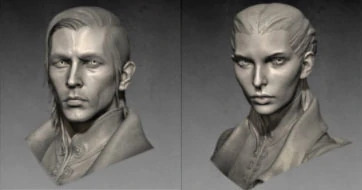
Human concept from Dragon Age: Inquisition
Anderfels
Antiva
Ferelden
Free Marches
Nevarra
Orlais
Rivain
Tevinter Imperium
Notes
According to dialogue between Oghren and Zevran Arainai, humans are 100 times more numerous than dwarves.[9] As there are over 100,000 dwarves in Orzammar[10] and their surface brethren match their numbers, this means that the total human population in Thedas is over 20,000,000.
Even though it is not common, there are unions between humans and elves. Their offspring would be elf-blooded.
All races in Thedas are said to live approximately the same length of natural life.[12]
Human society is largely inspired by Europe during the Middle Ages.[13]
Children between humans and dwarves are extremely rare because of the low fertility rate of dwarves in addition to the small chances of producing offspring with other races. Half-dwarves are shorter than humans but taller than dwarves. Furthermore, it is more common for such mating to happen with surface dwarves as such unions would be heavily stigmatized in Orzammar.[11]
6 notes
·
View notes
Text
Spirit
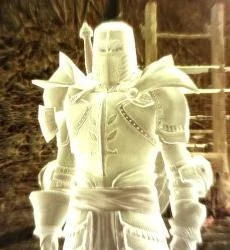
A spirit is a natural inhabitant of the Fade.
Nature of spirits
Chantry beliefs
According to the Chantry, the spirits of the Fade are the first children of the Maker. He turned his back on them because they lacked a soul – they could twist the Fade to their liking, but lacked the ability to imagine and create, and thus emulate their creator. The Maker created a new realm, separated from the Fade by the Veil, and this realm would be one that his new children could not alter at will. These new children had the spark of the divine within them, and the Maker was pleased. Supposedly, ever since the Maker created His new children, the spirits from the Fade have watched humanity with curiosity and, in the case of the more malicious spirits, envy and desire.
The malicious ones among the Maker's first children were jealous. They called out to the mortals, drawing their sleeping minds across the Veil and saw the land that the Maker had created for them in their dreams. They coveted the spark within them, but did not understand it. They shape the Fade to create the land that they see in the minds of men, and seek to draw the spark from them without truly understanding where it might actually come from.
Description
All the denizens of the realm beyond the Veil are spirits. Their very bodies are formed from the ether.[1] Spirits are not physical entities and are therefore not restricted to recognizable forms (or even having a form at all), one can never tell for certain what is alive and what is merely part of the scenery. (It is therefore advisable for the inexperienced researcher to greet all objects he encounters.)[2] They are intelligent creatures capable of speech.
It is said that spirits lack imagination and creativity; everything they make is based off something made by mortals. Whether benevolent or malevolent, most spirits cannot help but mine a Fade visitor's mind for their thoughts and memories. They then mimic the pieces of life they see by shaping the Fade[3] into various realms that cater to the unconscious desires of the living, providing experiences to the sleeping that become their "dreams." Because of this lack of creativity, and the fact that spirits don't really understand the things they create, their creations tend to feel wrong to observers from the mortal world: One man describes it as translating a passage into a different language, then getting drunk and trying to translate it back.[1] Spirits range in power from those who rule the dream realms to minor spirits that have little influence over the ether.[4]
Fandom may earn an affiliate commission on sales made from links on this page.
A spirit cannot comprehend a world that is static and immutable and is not familiar with the concept of time. It cannot comprehend what it means to be within a body of flesh yet for some unknown reason, some spirits crave to join the living. Some spirits cross the Veil because they desire to experience life[5], either to indulge in an aspect of psyche or to fulfill a purpose they embody. Usually spirits or demons can only cross over the Fade by attaching themselves to something in the mortal world. This is known as possession. Some spirits, however, may be drawn to the mortal world and made manifest against their will. They will be driven mad by shock or even be made terrified by the waking world, resulting in them becoming unintentionally violent or turned into demons once they have crossed the Veil. Spirits deliberately crossing the Veil without coercion had to develop the will and personality to do so, allowing them to maintain their form and nature. In areas where the Veil is thin, spirits engrossed by a particular event may endeavor to preserve the "feeling" of the area by preserving some or all of the area itself. This close presence of spirits scare away the vermin and plants that would erode such an area.[6]
Spirits are not complex in the sense that they seize upon a single facet of human experience, and this one idea becomes their identity.[2] They are formed as a reflection of the real world and its passions.[7] A spirit embodies and latches onto a specific purpose and will do all in its power to fulfill that purpose. For instance, a hunger demon will attempt to feed on anything it crosses,[3] and a spirit of justice will stop at nothing to uphold its name. Spirits however, don't remember much − a side effect of their ability to make themselves forget or "wash clean" unsettling facts which they cannot reconcile with their nature. While this routine keeps them pure, it also keeps them from learning, from growing. So all their acts to uphold their idea are mostly done in the simplest ways. Nevertheless, it is not unheard of for spirits to evolve and become more "human" by coming to terms with grief and thus be able to learn from what they endured. By coming to terms with grief, a spirit is able to grow as a person and not "wash clean" like a spirit.
Relevance is paramount to a spirit. Spirits whose realms are flocked with visitors rise to rule great portions of the Fade, while memories and concepts forgotten in the real world slowly drift away back into the ether, the spirits who ruled them losing all potency.[8] A spirit won't even recall the feeling it embodies once the latter was forgotten in the waking world.[9] As Rhys puts it in a dialogue with Cole, "being important makes you real".[10]
When a spirit dies its energy returns to the Fade. If the idea giving the spirit form is strong, or if its memory has shaped other spirits, something similar may reform one day, but it might have a different personality with no memory of the past.
Abilities
Since spirits are beings of pure magic, they have supernatural abilities both inside and outside the Fade. In the Fade, they can take the guise of people from the dreamer's memory. Those who have the will to cross over to the physical realm and not rely on possession could also assume a form of their choosing − most likely it will choose a form that will aid them in fulfilling its purpose. Spirits have the ability to read other people's emotions and thoughts. These abilities draws them to certain people who need their help. Since spirits originate from a realm with a physicality derived from emotion, memory, and magic; so too do spirits have supernatural abilities to adapt in such a realm. For example, spirits have an innate expertise in certain fields such as combat or magic. Some spirits also have the ability to make people forget about them and not be noticed. So long as the spirit remembers the Fade, spirits are able to retain some of their supernatural abilities even when they are in the world of Thedas.
Types
Benevolent spirits

Tier progression of a Spirit of Hope in Heroes of Dragon Age
Spirits embodying virtues may be considered benevolent (or at least not malevolent). Such spirits characteristically do not wish to cross the Veil. They consider the waking world a "dismal place" and pity mortals who are trapped there, beyond their reach and beyond help.[11] They may comfort visitors of the Fade by dreams that strengthen the soul, or visions that promote epiphanies.[12]
There are five widely known types of benevolent spirits: Compassion, Valor, Justice, Faith and Hope.[13], which range in power from the relatively weak spirits of compassion to the strongest spirits of faith and hope.[14]Spirit healers maintain close relationships with spirits of compassion.[15] Spirits of Hope rarely appear in the waking world since little there attracts them.[14] Two more rarely encountered types of spirits are Wisdom and Purpose.[16]
Demons
“Spirits wish to join the living, and a demon is that wish gone wrong.” ―Solas[17]
Demon is one name for the malevolent spirits from the Fade that embody negative emotions like rage or fear.[18] Demons envy the living, desire life and lust to cross the Veil. In the Fade, they draw sustenance from memories of the dreaming.[11] Often destructive, they can abuse the minds of dreaming mortals, possess living or dead creatures (generally preferring living mages – see abomination), or even animate rubble or suits of armor.
According to Solas, a more accurate distinction is "aggressive" and "non-aggressive" spirits. The classification of "malevolent" versus "benevolent" oversimplifies or overlooks the role that the mortal has to play in the spirit's demeanor. Depending on whom the spirit encounters, Wisdom and Purpose can be easily twisted into manifestations of Pride and Desire, but if the mortal is free of corrupting influences, the spirits will be very friendly.[16][19]
There are numerous ways for a spirit to become a demon:
The spirit can already embody something mortals would perceive as a vice or an ambiguous concept. (Ex: Torpor, Choice)
The spirit can reflect or imitate human perversions of a virtue, or possess a mortal with distorted values. (Ex: Allure, Vengeance)
The spirit can oversimplify the application or fulfillment of its virtue. (Ex: Compassion)
The spirit gains ego, ambition, longing, or a thirst for power. (Ex: Nightmare)
The spirit can be driven insane by outside forces, particularly manifesting into the real world prematurely or against its will. (Ex: Rift demons)
The spirit can be denied its original purpose, particularly through blood magic binding (Ex: Wisdom).
These are by no means the only methods that a spirit can transform into a demon, but are the methods which are confirmed or demonstrated within canon.
Imshael, one of the Forbidden Ones, insists on being called a "spirit of choice" and does seem to feed off mortals making difficult choices.
Michel de Chevin identifies Imshael as a strong desire demon.
Wisps and wraiths
Not all spirits represent a distinct virtue or vice. The weakest spirits, wisps, are shimmering orbs of light too simple and impressionable to be good or evil.[4][15][20] In some cases they appear to be benign, aiding mages who summon them in the mortal realm (by distracting foes[15] or boosting spellpower) or in the Fade (as guides).[20] The Mortalitasi of Nevarra draw wisps rather than intelligent spirits across the Veil.[21]Wisp wraiths, however, are known to attack anything in sight, and wraiths are scavengers of beings feeding on scraps of thought and unable to shape the Fade.[22]
Ghosts
Some spirits retain memories and personalities of those long gone. They substantiate the popular belief in ghosts who became lost on their way to the Maker's side, even as it is against the Chantry teachings.[23][24] Known examples include Katriel, Claudio Valisti, Cole, Telana and Justinia V among the others.
Spirits in other cultures
Dalish mages do not use any magic involving spirits, as they believe all spirits are dangerous.[25] In party banter with Anders, Merrill states that the Dalish believe "there's no such thing as a good spirit". Spirits cannot be broken down into clear-cut categories and differ from each other, just as people do. Furthermore, according to Felassan the Dalish do not think of demons as evil, but as wild animals, dangerous if treated carelessly.[26]
Conversely, the Avvar revere the spirits as "gods" and interact with them much more than the rest of cultures of Thedas, though only each hold's Augur has a direct link with the spirits. Avvar and spirits communicate regularly, through their Augurs, altars, offerings, and sometimes even direct contact. Spirits usually tend to assist Avvar in many tasks, such as providing counsel, assisting in battle, protecting holds from threats and dangerous people, and even helping train mages via voluntary, but temporary, possession.[27]
Though this is not considered common[28], spirits may also respond to calls and offerings from non-mage Avvar.[29] Likewise, many will become attracted to the clan's warriors during ritual combat and will provide them aid during combat, quicker reflexes, etc., not unlike Spirit Warriors or even the spirit friends of the clan's mages.[30]
Likewise in Rivain, local hedge witches called seers converse with spirits and even allow themselves to be possessed for the sake of their villages.[31]
In the Tevinter Imperium, mages bind spirits and use them as servants.[32]
Nevarrans have a unique relationship with magic and death. They believe that when a dead soul crosses the Fade it displaces a Fade spirit. In order to provide safe hosts for such spirits, they mummify the corpses of their dead and place them in elaborate crypts in the Grand Necropolis for the spirits to possess. The Mortalitasi guide the spirits into possessing the corpses and handle these necromancy rituals. The Mortalitasi however, draw wisps rather than intelligent spirits across the Veil in order to possess their corpses.
Notable benevolent spirits
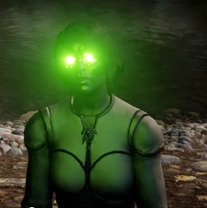
A Spirit of Wisdom
Spirit of Wisdom
Spirit of Faith
Spirit of Command
Spirit of Justice
Spirit of Valor
Cole, a Spirit of Compassion
Archivist, a Spirit of Knowledge
Trivia
Contrary to popular belief, David Gaider never said that spirits and demons are fundamentally different.[33]
In Dragon Age: Origins - Awakening, Justice claimed that his lyrium ring, a gift from the Warden-Commander, has a beautiful song which he wishes his spirit brethren were able to hear. Justice's unique ability to equip the ring also implies that spirits are resistant to lyrium's toxic effects.
#dragon age#dragon age inquisition#dragon age origins#dragon age 2#dragon age lore#dai#dao#da2#da#spirit
10 notes
·
View notes
Text
Sexuality and marriage
Within Thedas, there are several different views with regard to sexuality and marriage. Common to all groups is that marriage is not primarily regarded as a romantic affair, but a duty to one's family.
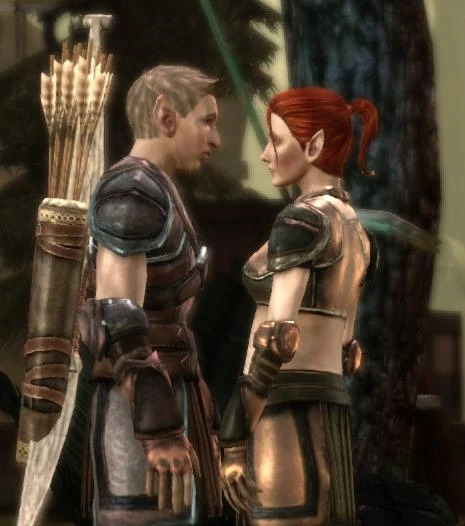
Cammen and Gheyna
Viewpoints
The Chantry
According to the Chant of Light, Andraste had a spiritual marriage with the Maker. All Andrastian priests are therefore symbolically wedded to the Maker and sworn to celibacy. In the eyes of the Chantry, marriage is both a celebration of tradition and a practical decision. Through a favorable marriage, one can make valuable connections, improve one's social standing, and secure financial stability for oneself and one's family. Love is not necessary for a successful marriage but is nonetheless desirable, as it makes the union stronger. The Chantry permits annulments but not outright divorce.[1]
If Leliana is Divine Victoria and in a romance with the Warden...
Leliana decreed that all members of the Chantry, from initiate to Divine, would be allowed to engage in romantic relationships. When questioned, the Divine pointed to Andraste, who served the Maker while wed to a mortal spouse. In time, many in the Chantry came to accept the Divine's decree that "Love is the Maker's best gift and is infinite."
City Elves
Among city elves, marriage is a rite of passage, the single greatest thing that distinguishes children from adults.[2] Elven children are usually matched by their parents and the alienage elders, and the bride and groom often will not have met each other before the marriage ceremony. Betrothals are often made between families from different alienages in order to promote inter-city trade and relations, as well as to bring new elves into the alienage community. Marriage ceremonies require the approval of the Chantry, and are officiated by one of the Chantry priests. In a community where there is mostly little cause for celebration, a wedding is a tremendous affair, and the whole district will turn out to enjoy the feasting and dancing.
The Dalish
The Dalish appear to be more in line with Fereldan thinking rather than other cultures like Orlais. This means that they tend to take relationships slowly and seriously with each other. Once they have come of age, they may choose a mate with whom to "bond"[3] for life. Elves who bond may exchange small gifts with one another.[4] It is unknown how they view same-sex relationships, but there seems to be no stigma against it. The only thing Dalish may frown upon is the refusal to have children.[5]
Some Dalish clans practice arranged marriages.[6]
The Dalish do not approve of interspecies romance, and this may result in exile from one's clan.[7] This likely stems from the fact that children born of an elf and another species physically take after the other species.[8]
Dwarves of Orzammar
The dwarves of Orzammar are noted for their polyamory (the keeping of multiple intimate partners), especially among the upper classes. While a dwarf has only one legal spouse, many nobles keep concubines, typically noble hunters, who are raised up to be part of the household and have their names recorded in the Memories. A dwarf's caste is determined by that of their same-sex parent, so many casteless offer themselves to nobles or to other higher caste dwarves as sexual partners in the hopes of producing a child of the noble's gender. As dwarven fertility is in dangerous decline due to chronic exposure to darkspawn corruption[9] as well as because of constant war with them, any noble child is considered a blessing, and such offers are rarely turned down. If such a union produces a child of the commoner's gender, however, the infant will be rejected, as it would be part of the lower caste and an embarrassment to the higher caste parent's house if it's allowed to stay with them.
Grey Wardens
Although Grey Wardens are not forbidden from marrying, it is rare for them to do so. Their short lifespans make them poor candidates for parenthood or long-term relationships. Even if they are not killed in battle against the darkspawn, they rarely survive past middle age due to the darkspawn taint. Most Grey Wardens dedicate their brief lives to fulfilling their duty, leaving them little time for pursuits such as family life. Furthermore, the taint makes conceiving a child very difficult (nearly impossible if both partners are Grey Wardens).
Notably, in Dragon Age: The Calling the Grey Wardens Genevieve and Guy are mentioned as having been betrothed.
Grey Wardens may also enjoy a certain reputation for sexual prowess as noted in romance dialog with Morrigan where she will make mention of the famed Grey Warden Garahel's reputation. The allure of Grey Wardens is also intimated in Dragon Age: The Calling in Duncan's brief affair with an awe-struck mage in the Ferelden Circle Tower.
Mages
Mages, because of their outsider status, are not bound to traditional social morals and consequently enjoy greater sexual freedom than most, though the exact degree varies from Circle to Circle. For example, Anders expressed surprise that Emile de Launcet of the Kirkwall Circle was still a virgin at 24, and noted that such a thing would be unheard of in the Fereldan Circle. Mages are discouraged (though not actually forbidden) from marrying and reproducing, as the offspring of mages are very likely to possess magical ability themselves. Dialogue between Wynne and Alistair hints at some form of birth control or abortion being readily available to mages, perhaps to discourage the propagation of magically gifted children. If a mage does produce a child, it is taken from the parents at birth and raised under the supervision of the Chantry.
Those children who prove to have magical ability are immediately transferred to a Circle of Magi in another country, where they are taught to control their powers away from their birth parents. Mages (and non-mages) who do not wish to be separated from their children will sometimes conceal them from the Chantry and either train the child themselves (as Malcolm Hawke did) or hire an apostate as a tutor (as Arlessa Isolde hired Jowan to tutor Connor Guerrin).
The Tevinter Imperium, on the other hand, celebrates the birth of mage-blood children.
Orlais
Aristocrats in Orlais are notorious for their hedonism and extravagance, and sexual relations with multiple partners of either sex are not uncommon. The peasantry is much less tolerant of such behavior, at least in public. Emperor Florian is rumoured to have had an affair with his cousin Meghren, which resulted in Meghren being banished from Orlais to Ferelden. The scandal surrounding their relationship was likely due to their being related, however, not to the fact that they were both men.
Qunari
Qunari do not marry or choose romantic partners. A Qunari's most important relationship is that with his or her colleagues. They do not generally associate mating with love, and recreational sex is treated as a simple biological need. They are capable of feeling and forming emotional bonds with one another, but do not express it sexually, as those who do are re-educated by the Ben-Hassrath.
The Tamassrans keep detailed genealogical records and choose who will mate with whom. They do not allow cross-breeding between races. Familial bonds are not present in Qunari society. Children are raised by the Tamassrans, evaluated, and assigned a job.
Marriage rituals
In Andrastian society marriages are performed by Revered Mothers, such as Mother Boann.
Prospective grooms also appear to enjoy bachelor parties prior to their weddings.[10]
Tests of worth
Among the Dalish it appears that young men must prove themselves as hunters and providers in order to be worthy to marry, as Cammen must prove himself as a hunter before Gheyna will consider him.
Dowry
There appears to be some form of a dowry system used in Andrastian courtship, as mentioned by Aveline Vallen when she is courting Donnic. She notes that three goats and a sheaf of wheat, taken to his mother, would be dowry tradition.
Among the city elves the dowry tradition is even more important. Marriages are arranged between alienages and a dowry is paid to the alienage which is losing a member, in order to compensate for the loss to the community. Cyrion Tabrismentions to the City Elf that a dowry was provided for their marriage.
Dwarves are also known to use a dowry system in their courtship, as Dagna mentions that her father Janar intends to sell her for the highest dowry.
Matchmaking
Matchmaking is practiced in many cultures in Thedas, from the socially engineered pairings of the Qunari to the arranged marriages of human nobility to the matchmaking of the city elves. City elves in particular make use of matchmakers to locate mates in distant alienages. It helps to strengthen ties between separate alienages. The City Elf, notably, is implied to never have met their betrothed prior to their wedding day.
Hahrens in alienages will also help to arrange marriages for those elves who have no parents or means to arrange a marriage on their behalf.[11]
In the Tevinter Imperium, powerful mage families often orchestrate arranged marriages to improve the chances of having children with the potential to become "perfect" mages.[12]
In Antiva, it is acceptable for parents to arrange matches for their children.
Vows
Both the Dalish and Andrastian cultures say vows during the marriage ceremony.
Dalish vows are said in elvish. One version is "Sylaise enaste var aravel. Lama, ara las mir lath. Bellanaris," spoken by an elven Inquisitor in the Trespasser DLC.
Andrastian vows are spoken in Common tongue. One known version of Andrastian vows are, "I swear unto the maker and the Holy Andraste to love this woman the rest of my days." As the female version is never spoken, it is unclear whether these are set vows or something Cullen Rutherford, the person speaking, wrote himself. It is unknown if it is customary for only the male in the relationship to say vows during a ceremony.
Same-gender relationships
Same-gender relations are generally considered strange in Ferelden, but Fereldans do not consider it immoral, and place no particular stigma upon it. Orlesians regard homosexuality as a mere quirk of character, and the Antivan Crows show a winking tolerance for relations with multiple partners of any gender. The Chantry does not seem to have an official view on the subject, and nowhere in Thedas is it prohibited.[13] The Qunari seem to have no taboo on the gender of one's recreational sexual partners, though presumably it would be unthinkable to refuse to perform their procreative obligations for any reason, gender or otherwise.
There is pressure in certain circles, such as the elves and the human nobility, to marry an opposite-gendered partner, but this is motivated by pragmatism rather than morality; a homosexual couple cannot have biological children. For a diminished race like the dwarves, it is vital that every fertile individual produce offspring, and human noble families place great stock in the continuity of bloodlines in order to have clear heirs to noble titles and fortunes, and thus avoid the conflicts that often erupt when succession is not clear.
In Tevinter, same-sex relationships between nobles are largely hidden. These relationships are encouraged with favored slaves.[14]
Interspecies
Interspecies relationships are possible, but frequently frowned upon by most societies. The fertility rate between two parents of different race are very low compared to that of the same race. In particular, elves are bound only to produce elven children with their own kind because their offspring with a human would be Elf-blooded, appearing physically human. Similarly this also happens with dwarves. Subsequently, elves mating with humans is considered traitorous by the rest of their kind and any elf who conceives a child with a human risks expulsion from their community.[8]
A child between a dwarf and a human is a half-dwarf, which would be taller than dwarves but shorter than humans. Such children are extremely rare, as dwarves are comparatively few in number and those living underground are reclusive to outsiders; mating with other species would bring great shame to the dwarf as well as their family because of the social stigma. In addition, the dwarven fertility rate is very low due to the close proximity to the darkspawn taint for many generations.[8]
Nobody in Thedas has any idea what a qunari half-breed might look like, since the Tamassrans prohibit interspecies mating among qunari and there is no evidence of interbreeding between Tal-Vashoth and other races. However, there appears to be no taboo against non-procreative sex with non-qunari.
In Dragon Age: Origins it is also possible to engage in bestiality at the Denerim brothel. The only option are nugshowever.
Prostitution

the interior of Kirwall's brothel, the Blooming Rose
Brothels are legal in Ferelden, Kirkwall and in the dwarven city of Orzammar. Although they are not considered respectable institutions, it is no more taboo to visit them than a seedy tavern or gambling house. Prostitutes would usually cost 10 Gold pieces in the city of Kirkwall during Hawke's residence.
Love legends
If romanced, Leliana will tell the Warden the star-crossed (and likely analogous) tale of Alindra and her soldier lover. Class differences served to separate the pair in life and prevent their desired love match, but the gods ultimately brought the lovers together again after death as stars in the sky.
24 notes
·
View notes
Text
Calendar
“For earth... sky. For winter... summer. For darkness... light.” ―Threnodies 5

Astronomical calendar written in ancient Tevene
The calendar in Thedas consists of twelve thirty-day months. Furthermore, the majority of Thedas, from Tevinter Imperium to Ferelden, celebrates five major holidays, each tied to the transition of a season or, in the case of First Day, the beginning of a new year. Although each month has a name in the language of Ancient Tevinter, the people of Ferelden commonly use the "low" names. The Tevinter names are listed first, followed by the more common name for the month.
The system was developed in the early years of the Tevinter Imperium and was influenced by the elves.[1]
List of months and holidays
The five holidays, or annums, take place at the beginning of the month within which they fall.
1st month: Verimensis / Wintermarch (Annum: First Day)
2nd month: Pluitanis / Guardian (Annum: Wintersend)
3rd month: Nubulis / Drakonis
4th month: Eluviesta / Cloudreach
5th month: Molioris / Bloomingtide (Annum: Summerday)
6th month: Ferventis / Justinian
7th month: Solis / Solace
8th month: Matrinalis / August (Annum: All Soul's Day)
9th month: Parvulis / Kingsway
10th month: Frumentum / Harvestmere
11th month: Umbralis / Firstfall (Annum: Satinalia)
12th month: Cassus / Haring
Description of holidays
First Day
The traditional start of the year, this holiday involves visits to neighbors and family (in remote areas, this was once an annual check to ensure everyone was alive), as well as a town gathering to commemorate the year past, accompanied by drinking and merriment.
Wintersend
Once called “Urthalis” and dedicated to Urthemiel, the Old God of Beauty, this holiday has now become a celebration of the Maker. It stands for the end of winter in many lands and coincides with tourneys and contests at the Proving Grounds in Minrathous. In southern lands, this holiday has become a day of gathering for trade, theater, and, in some areas, the arrangement of marriages. It is celebrated at the beginning of Pluitanis.
Summerday
Once called “Andoralis” and dedicated to Andoral, the Old God of Unity, this holiday is universally celebrated as the beginning of summer, a time for joy and, commonly, marriage. Children ready to come of age don white tunics and gowns. They then join a grand procession that crosses the settlement to the local Chantry, where they are taught the responsibilities of adulthood. Summerday is a particularly holy occasion in Orlais. It is celebrated at the beginning of Molioris.
All Soul’s Day
Once called “Funalis” and dedicated to Dumat, the Old God of Silence. However, since Dumat’s rise during the First Blight, Thedosians turn a blind eye to any old ties between the day and the dragon. The holiday is now known across Thedas as All Soul’s Day and spent in somber remembrance of the dead. In some northern lands, the people dress as spirits and walk the streets in parade after midnight. The Chantry uses the holiday to remember the death of Andraste, with public fires that mark her immolation and plays that depict her death. It is celebrated at the beginning of Matrinalis.
Satinalia
Once dedicated to the Old God of Chaos, Zazikel —but now attributed more to the second moon, Satina— this holiday is accompanied by wild celebration, the wearing of masks, and naming the town fool as ruler for a day. In Antiva, Satinalia lasts for a week or more, while a week of fasting follows. In more pious areas, large feasts and the giving of gifts mark the holiday. Satinalia is celebrated at the beginning of Umbralis.
Trivia
There is something called a "name-day" in the dwarven commoner origin[2], but it's the only instance of such, and it's not made clear what this day signifies. The term "birthday" is used in every other context including codex entries and conversations in-game.
Satinalia is also known as "Feastday". [3] It is likely based on the Roman Saturnalia, also celebrated in the onset of winter and marked with merriment and revelry.
Typically only courts and scholars use the high names for months.[4]
The month of August was originally intended to be named after Andraste. This was during a point in early development of Dragon Age: Origins when her name was Augusta.[5]
In Dragon Age: Origins, Alistair makes a reference to the weekday Tuesday, when talking to the Warden about the events that transpired at Redcliffe Castle, while an aggressive Hawke will make a reference to Tuesday in conversation with Tallis in Mark of the Assassin. In Dragon Age: Inquisition, Iron Bull mentions the weekday Friday through party banter with Blackwall, and Dorian refers to Sunday during the cutscene that unlocks The Name of Our Enemy. These instances show that some weekday names are based on the real-world Gregorian calendar.
#dragon age#dragon age inquisition#dragon age origins#dragon age 2#dragon age lore#dai#dao#da2#da lore
20 notes
·
View notes
